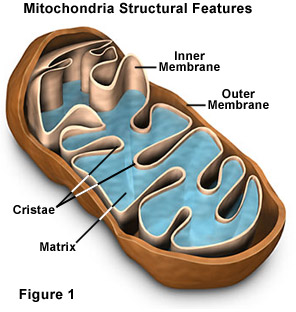Haseung Jun
Tejas Bhartiya
AP Biology 🧬
358 resourcesSee Units
Cell Structure & Function
As with most biological processes, the structure of all of the organelles listed above contribute to the function of that organelle. A few examples are below:
Mitochondria
The inner foldings of the mitochondria membrane, referred to as cristae, are essential to the increased surface area of the inner membrane. This increased surface area allows for much more space for the Electron Transport Chain (ETC), an essential part of cellular respiration. The matrix, used as the site of the Krebs cycle, is right next door and can therefore transfer its products easily to the ETC. With the ETC, ATP synthesis happens. As you might already know, the mitochondria is the powerhouse of the cell, meaning the synthesis of ATP is crucial to cell survival, hence increased surface area would prove to be beneficial to the cell.

Image Courtesy of Molecular Expressions
Chloroplast
Like the mitochondria, the stacked thylakoid membranes of the chloroplast allow for an increase in surface area necessary for the ETC of the light-dependent reactions of photosynthesis. These membranes are also lined with photosystems and chlorophyll, increasing the amount of energy that the plant can get from light. These thylakoids are stacked in stacks called grana. The ATP synthesis (photosynthesis) happens within these grana structures. Inside the inner membrane and outside the thylakoid is the fluid called stroma. The proximity of the stroma to the thylakoids allows for the sharing of products between the Calvin Cycle (which happens in the stroma) and the light-dependent reactions (more on all of this in Unit 3!). As seen below, the structure of the chloroplast lends to its function.

Image Courtesy of BioNinja
Plasma Membrane
The plasma membrane, discussed more below, is specifically designed to be semi-permeable. This means that some molecules are able to travel through without any problem, while others need specific proteins in order to help them across. The plasma membrane allows for the creation of a concentration gradient, an essential part of many biological processes.
Lysosome
The plasma membrane that contains the lysosome is incredibly important. If the hydrolytic enzymes inside of the lysosome were to burst, all of the cell's organelles may burst as well, and the cell would die. In order to prevent this, the membrane is specially designed to keep these enzymes in. The lysosome will bind with other vesicles that contain contents necessary for digestion when needed.
Endoplasmic Reticulum
You will learn more about the process of protein synthesis later, but the endoplasmic reticulum is the "powerhouse" of protein making! On the membrane are ribosomes, which make the proteins with RNA. It then packages these proteins and ships them to the Golgi, which can be thought of as the USPS of the cell.
🎥 Watch: AP Biology - Cell Structure & Function
Check out the AP Bio Unit 2 Replays or watch the 2021 Unit 2 Cram
Browse Study Guides By Unit
🧪Unit 1 – Chemistry of Life
🧬Unit 2 – Cell Structure & Function
🔋Unit 3 – Cellular Energetics
🦠Unit 4 – Cell Communication & Cell Cycle
👪Unit 5 – Heredity
👻Unit 6 – Gene Expression & Regulation
🦍Unit 7 – Natural Selection
🌲Unit 8 – Ecology
📚Study Tools
🧐Exam Skills

Fiveable
Resources
© 2025 Fiveable Inc. All rights reserved.